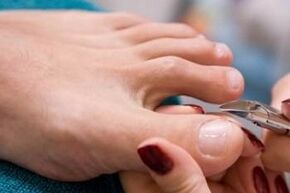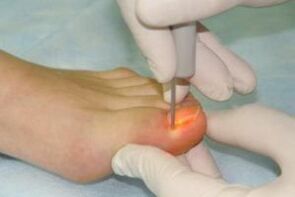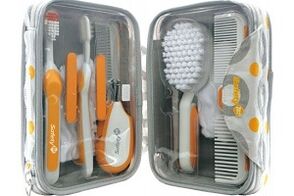The opinion that fungal nail infections are not dangerous to human health is quite widespread among people.Onychomycosis (nail fungus infection) accompanies many people for most of their lives, often going unnoticed due to the absence of acute symptoms.But this does not make the treatment any less important for the patient.Also, everyone should imagine what the nail plate affected by the fungus looks like in order to independently diagnose the pathology.
Infection with fungal microorganisms

Infection with fungi can occur in situations that are completely normal to humans.In most cases, everyone is unaware of how they are exposing themselves to the risk of infection.The main causes of nail infections include the following:
- Wearing other people's shoes, especially on the feet without socks or tights.
- Visiting the sauna, bath and swimming pool without individual slippers (slate).
- Looking for pedicurist services in salons with questionable quality of work.
- Using other people's files and scissors to process the nail plate.
- Using other people's washcloths and towels.
In addition to the direct causes of onychomycosis, there are factors that contribute to an easier infection:
- Always wear stale socks, stockings, tights.
- Wearing closed shoes in the summer, which causes the feet to sweat (and this is favorable for the proliferation of fungal microorganisms).
- Neglect to always wash your feet with soap, especially in summer after wearing open shoes.
- Buy shoes made from artificial materials.
- Hangnails around the toenails, cracks and corns on the soles of the feet.
What does nail fungus look like?
Nail changes develop slowly, progress continuously without antifungal therapy and can cause detachment of the nail plate, which is known to be irreversible.At different stages of the development of onychomycosis, all its clinical manifestations have varying degrees of severity.Nail changes are also individual, but in general some general signs can be identified:
- Change the color of the nails to brown, yellow, white, green and their colors, combinations of each other.
- The appearance of brittle nails, their separation.
- The tip of the nail plate collapses more.
- The appearance of hangnails, cracks and peeling on the skin near the nail, in the space between the fingers.
- An increase or decrease in nail thickness (however, in some cases, the thickness remains unchanged).
Nail fungus treatment

It is recommended to start all therapeutic measures aimed at eliminating onychomycosis on the feet when the first suspicious signs of this disease are identified.
What needs to be treated, the type of medicine and how it will be used determine the level of development of the disease and the extent of the damage to the nails.
In general, there are two options for taking antifungal drugs - local (topical) and general (systemic).Topical products are gels, ointments, creams, solutions and sprays for application to the skin and nails.Systemic therapy is the intravenous infusion of drugs and taking them orally (orally, that is, "by mouth") in the form of tablets or capsules.
These options can be used not only separately, but also in combination with each other.In addition, there is mechanical removal of infected tissue, but only in cases of advanced fungal damage.
Topical antifungal medication
- Solution for external use.They should be applied twice a day to the affected area with a brush.Before application, it is recommended to wash the area with soapy water and dry.After you use the solution, cover the area with an aseptic dressing."
- Antifungal ointments and creams are applied in a thin layer over the affected area once or twice a day.
Mechanical removal

Most patients believe that when it comes to this type of treatment, they will definitely have the nail completely removed.Fortunately, only in the advanced stages of the disease (the fungus has affected most of the tissues) do they use it for this.In other cases, they can use a pedicure instrument to remove part of the tissue, which is affected by microorganisms.
Surgery to remove the nail plate under local anesthesia has been around for a long time.In it, the entire nail is removed at once, and first they separate it from its bed with scissors, and then "remove it" with nippers.But such an operation damages the nail matrix, i.e., the basis of regeneration, which leads to the growth of unnatural new tissues and their frequent ingrowth into soft tissue.
Now there is an option to cure the fungus using laser removal of the infected nail plate.The laser does not touch healthy tissue and destroys only the fungal cells located even in the inner layer of the nail, avoiding deformation of the plate.
In addition, there is a hardware removal method, where the nail is removed layer by layer using a device with cutters of various sizes.This procedure is carried out once a week or every two weeks.Repeat this until the affected nail layer is completely removed.
Prevention of onychomycosis

Preventing infection by fungal pathogens in humans is not that difficult for any patient.You just need to be more attentive to your lifestyle and remember about diseases like onychomycosis.Here is a list of basic steps to prevent athlete's foot:
- Do not wear, let alone wear, other people's shoes.
- Use only your own tights and socks, remember to wash them often.
- Have your own personal pedicure kit.
- Use the services of a pedicurist only in proven and "high quality" service places.
- Remember to bring and wear flip-flops or slippers in public bathing areas.
Everyone should remember that onychomycosis is far from a harmless disease, which can even deny the nail plate or be complicated by a serious condition called "fungal sepsis" (blood poisoning).
Today, all effective treatment regimens for toenail fungus have been developed;You just need to consult a dermatologist in time and identify the presence of pathogenic microorganisms.















